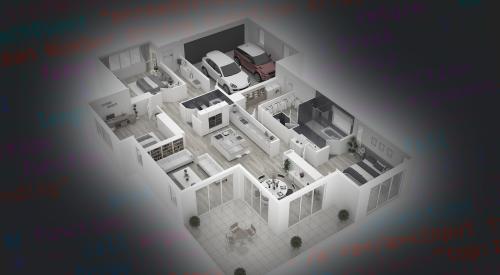Building a home from the ground up is expensive and the process could be so daunting for some potential buyers that they look as resales rather than new construction. However, if you as the builder are clear about costs going in, you give the buyer a chance to strategize and meet financial needs. To help you with that process, here are a handful of tips you might suggest to a prospective buyer looking to make the most of a tight budget.
1. Value the Land
The first impulse for a lot of people looking into building a home on a tight budget might be to look for a particularly affordable plot of land. And hey, if there's one that works, this can be a great start. However, it’s also important to convey to a client that a cheaper plot of land doesn’t necessarily equate to a cheaper project. Sometimes, in fact, it can be just the opposite.
In “10 Tips to Find the Best of What’s Left,” Paul Hanson, president of Epcon Franchising wrote that homeowner should “buy competitively.” What this means is essentially that they should pay attention to median values and try to compete in a target market, rather than settling for the most affordable site they find. Often enough, a cheaper site will also be a poor one for construction. You should convey that on such a site, the homeowner may wind up facing more difficulties (and unforeseen costs), not to mention the home itself will be less valuable on a less desirable lot. This doesn’t mean the client has to splurge on a particularly expensive lot, either. But he or she should know to value the land, because paying a little bit more for a slightly better property might actually save money in the long run.
2. Cover Early Payments with a Loan
One of the most challenging aspects of building a home on a tight budget can be stomaching that first big payment. Even if a prospective homeowner has purchased the land and set things up with you or your company, such that there's a gradual payment schedule, there's a difference between planning and paying. And ultimately, the best way for many buyers to get past this early hurdle (and get payments underway to you and your company) is to finance early expenses with a loan.
At first, this might sound like a burdensome idea to some buyers. A loan can sound like little more than a way to delay payments, and many might associate property-related loans with losses of home equity. In reality though, a personal loan can get the job done. While these are more commonly associated with needs like managing debt or financing education, moving and relocation are reasons for what a personal loan can easily be used for as well. Basically, prospective buyers can apply through the simple process typical of personal loans, acquire a lump sum, and then apply it to whatever they need — in this case, early payments to you and your company. By suggesting this sort of arrangement, you can make sure that you're paid as needed, but also help the buyer to avoid having to pay a significant sum up front, all at once.
3. Find Ways to Maximize Space
If the buyer wants a say in the design of the home — and he or she likely does, if it's being built from the ground up — then you might also benefit him or her by recommending some ways to save space. Think of the home not in terms of square footage or total area, but rather in terms of function.
As an example, you might tell a buyer to consider the idea of working an open floor plan into the design. This layout has been a trendy option for several years now, and it’s not necessarily for everyone. However, one benefit of an open floor plan is that spaces can be multifunction. A family room can blend into a kitchen; a home office can be attached to an entryway. Whatever the specifics, an open floor plan is an example of a design concept that can provide functionality within a slightly more compact space, without actually feeling compact. It’s a way of maximizing space that may just cut down on the total cost of the project.
4. DIY the Finishing Touches
This last point is not to suggest that you should leave aspects of the home construction to the client. Unless the client truly knows what he or she is doing, the bulk of the project should remain in your hands, as the professional. However, you can let a hesitant client know that a few expenses can be shaved off in the form of small finishing touches or décor.
There are a number of tasks some homeowners can do fairly cheaply on their own: hanging curtain rods and working out ceiling accents. This of course will depend on any individual homeowner's know-how, and how much the jobs may cost to have done professionally. But taking on these jobs is another way for a client to cut costs (without really dipping meaningfully into your profit). Building a home is always going to be expensive for buyers, but by following these tips and keeping a close eye on costs, they can offset the worst of it and get the job done even on a tight budget. For that reason, it can be helpful to keep these tips in mind if you're ever dealing with a prospective buyer who's worried about cost.













